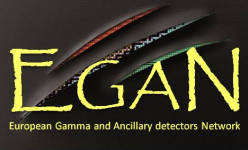Speaker
Liam P. Gaffney
(University of Liverpool)
Description
There is considerable theoretical and experimental evidence that atomic nuclei can assume reflection asymmetric shapes that arise from the octupole degree of freedom. From a microscopic point of view, the wave functions of low-lying 3- octupole excitations must contain components which include the intruding unique parity state ( _l_ , _j_ ). Because of the nature of the octupole-octupole interaction in nuclei, strong octupole correlations arise when the Fermi level lies between this intruder subshell and a subshell with Δ _j_ , Δ _l_ =3, giving rise to [ _l_ , _j_ ; _l_ -3, _j_ -3] particle-hole configurations at relatively low excitation energies. The strongest correlations occur near the proton numbers _Z_ = 34, 56 and 88 and the neutron numbers _N_ = 34, 56, 88 and 134 where, for the heaviest nuclei, an octupole deformation can occur in the ground state. Indeed, at these values of _Z_ and _N_ , nuclei exhibit phenomena associated with reflection asymmetry such as odd-even staggering of the positive- and negative-parity yrast bands in even-even nuclei, parity doublets in odd mass nuclei, and enhanced _E_ 1 moments due to a division of the centre of charge and centre of mass. The only observable that provides unambiguous and direct evidence for enhanced octupole correlations in nuclei is the _E_ 3 matrix element, and the measure of octupole correlations in the ground state is the B( _E_ 3; 0+ → 3-). In the mass region where octupole correlations are expected to be largest, i.e. at _Z_ = 88 and _N_ = 134, there is a lack of spectroscopic data on _E_ 3 moments. So far, only for 226Ra, with its comparatively long half life of 1600 years, has it been possible to measure the B( _E_ 3) strength using Coulomb excitation. This talk will present the current status and the first results from the recent Coulomb excitation the post-accelerated 224Ra beam at REX-ISOLDE facility, CERN, using the MINIBALL setup.
Primary author
Liam P. Gaffney
(University of Liverpool)
Co-authors
Butler Peter A.
(University of Liverpool)
Scheck Marcus
(University of Liverpool)

